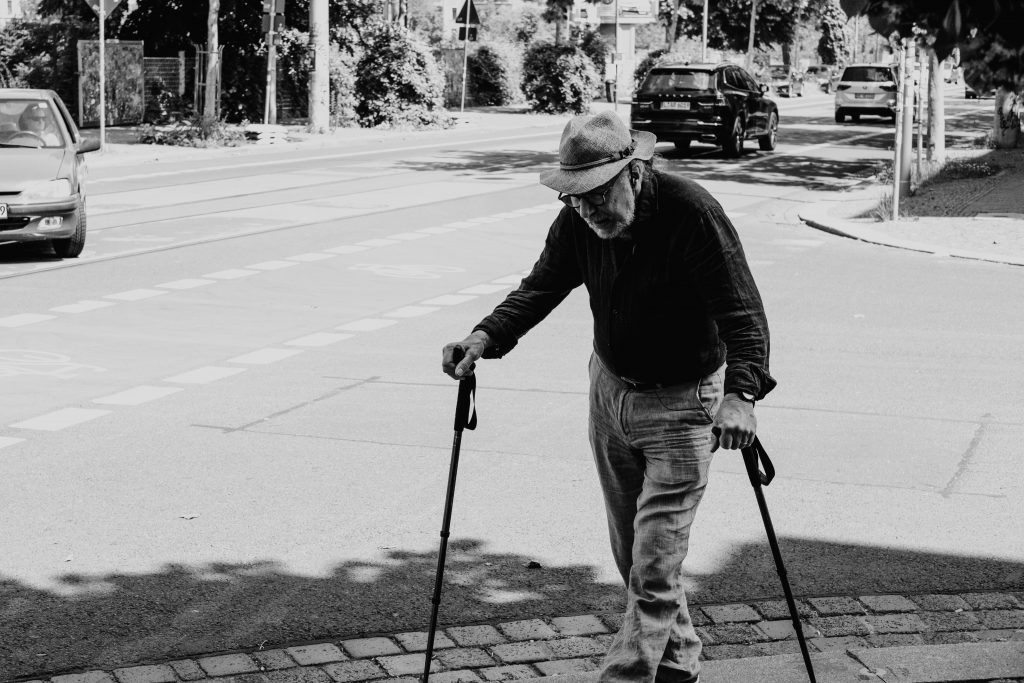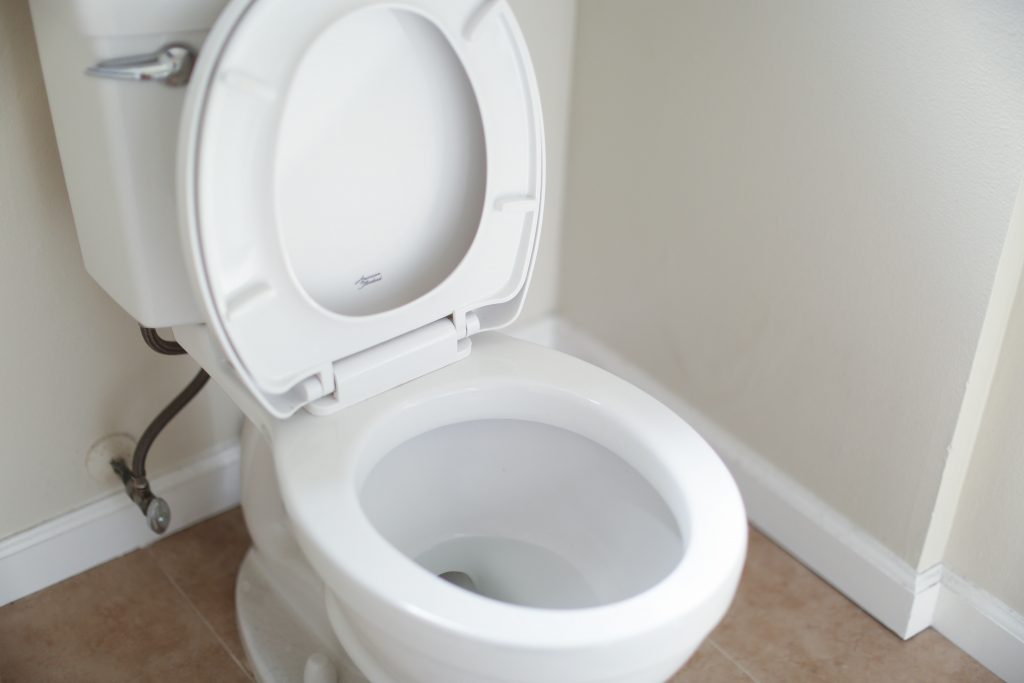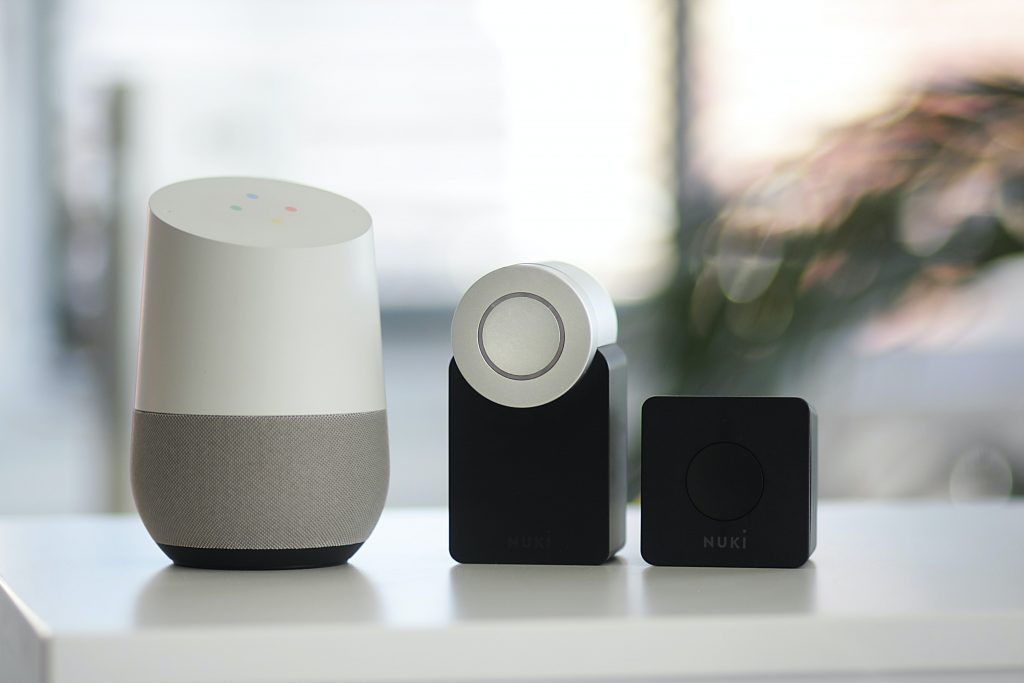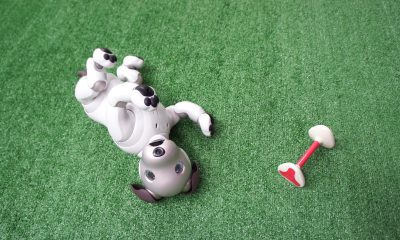If your elderly parents have decided to live in their home as they age, it is important to ensure their home is as safe and senior-friendly as possible. Aging in place comes with unique challenges that should be dealt with to prevent senior injuries.
According to the Federal Housing Administration, nearly 90% of retiring homeowners want to stay in their homes as they age. Follow our Home Safety Guide for Seniors in Place below to keep your elderly loved ones safe. You can install a checklist here to make sure you don’t forget anything.
What Is Aging in Place?
Aging in place is when a senior decides to live in their home as they continue to grow older. This option is often chosen instead of assisted living or nursing home care.
Although this option does allow your parents to live in their home, it involved planning ahead and making a few changes to make the residence safer and more comfortable.
You should think about what kind of help they might need as they age, including mobility, visual aids, comfort, and anything else. This will help you decide what to look for when making your loved one’s home senior-safe.
Senior Fall Hazard Prevention Checklist
Possibly the most important thing to look for in your parent’s home is fall hazards. According to the CDC, 1 in 5 falls cause serious injuries such as broken bones or head injuries. Each year, 3 million older people are treated in emergency departments for fall injuries, and more than 95% of hip fractures are caused by falling. Senior fall injuries in 2015 resulted in more than $50 billion in medical costs.

Seniors become frailer and at higher risk of being injured as they age. Each prevented fall saves an average of $30,000 in hospital bills. To prevent your loved one from falling, take the proper precautions to ensure no trip hazards.
- Remove throw rugs. These rugs may be decorative, but they are often slippery. If the rugs in your senior’s home don’t have rubberized backing, it is best to get rid of them.
- Clean up. It can be hard for aging seniors to clean their homes. Hire a caregiver or take some time to straighten their home. Items like loos clothes and shoes are common trip hazards.
- Discard old furniture. If they own old furniture that is not very sturdy, it is probably time to get new furniture. If their furniture is difficult to get in and out of, replace it with more senior-friendly options.
- Avoid extension cords. Stretching extension cords across the floor is a major risk for seniors. Instead, find an outlet near the appliance or rearrange the room to prevent the need for extension cords. Otherwise, find a way to move the extension cord out of any walkways.
- Buy non-slip footwear. Talk to your loved one about wearing non-slip footwear on smooth surfaces. Smooth surfaces can get slippery, so wearing slippers with non-slip bottoms or flat shoes can prevent potential falls.
- Using canes and walkers. If your parent uses a walker or cane, talk to them about using it. Some seniors are negligent in using these items. Make sure they are using their cane or walker at all times.
- Paint doorsills. To avoid tripping, paint doorsills a different, bright color. If there is raise flooring between rooms, ask a safety expert about adding an indoor ramp or handrails.
- Consider hip pads. If they are at high risk for falls, it might be worth considering hip pads. This can significantly reduce the risk of hip injuries due to a fall.
- Have their vision checked. It is a good idea to take your parent to the optometrist to get their vision checked regularly. Make sure they have the right contacts and glasses so that they aren’t vision-impaired when walking. Talk to them about wearing their eyewear whenever they move around their home.
- Provide easy seating. Make the home senior-friendly by adding accessible seating throughout the home. Benches near the front door to put shoes on and kitchen stools can make it easier to perform activities of daily living (ADLs).
- Check the outdoors. Inspect the driveway for cracks and be sure there is a clear path to the mailbox. Remove sticks and other debris that might be a trip hazard.
- Talk to your healthcare provider. Look to have a special fall risk assessment with your parent’s healthcare provider. Ask them if your parent might benefit from an exercise program that helps prevent falls.
- Clean up after pets and children. If a pet or child is living in the home, be sure all toys are picked up. If you have a small indoor dog, it might be a good idea to section off an area of the house just for them. This will prevent your loved one from tripping over the dog.
- Purchase a stairlift. Stairlifts can be custom fitted inside or outside of a senior’s home. Call a qualified stairlift provider to purchase and install the stairlift. Stairs are commonplace for falls, so installing a stairlift can help prevent injuries.
Senior Bathroom Safety Checklist
Bathrooms are one of the riskiest rooms in the home. Bathtub edges can be hard to step over, wet surfaces can cause slips, and toilets can be hard to sit down or stand up from. To prevent bathroom injuries, follow our senior bathroom safety checklist below.

- Install grab bars. Grab bars can assist seniors with using the toilet and getting in and out of the shower. Install grab bars in convenient locations that are easily accessible.
- Set the thermostat. To prevent accidental burns, set the thermostat on the water heater no higher than 120° F.
- Use rubber mats. To prevent slipping, rubber mats can be used. However, ensure that these mats are safely anchored to the floor so that your loved one doesn’t slip on the actual mat instead.
- Consider a walk-in model. Original bathtubs can be difficult for seniors to get in and out of. Consider replacing their current bathtub with a walk-in model.
- Purchase a bathing chair. Bathing chairs are beneficial for seniors with mobility issues. Put a bathing chair in their shower or tub to make it easier for them to wash while increasing the risk of slipping.
- Install a hand-held showerhead. To make it easier for your loved one to bathe, install a hand-held showerhead. This will be easier to use, especially for cleaning hard-to-reach places.
- Use a raised toilet seat. Replace the original toilet seat with a raised toilet seat with handlebars. Seniors will find it easier to sit and stand using a toilet seat between 17 to 19 inches in height.
- Install a nightlight. Most seniors take multiple trips to the bathroom at night. Install a nightlight in the bathroom as well as a few on the way to the bathroom. This will help them find their way and prevent trips over items in their way.
- Remove the door locks. If your loved one falls and needs help up, a locked door may make it difficult to reach them. Remove door locks on any bathroom doors in their home to prevent this.
- Install rough coating. The bottom of their home’s tub or shower can get very slippery. Have a permanent rough coating installed to give them more stability.
- Check the outlets. It is important to make sure things are easily accessible for seniors. Reaching is a major cause of falling. To prevent this, check and make sure all outlets are easily accessible but away from water.
Senior Bedroom Safety Checklist
Surprisingly, the bedroom is the of the most common places for senior injuries. There are multiple potential risks to look out for.
- Replace the old mattress. A firm mattress is far more comfortable, provides more support, and doesn’t “trap” seniors in bed. If your parent’s mattress is soft, replace it with a firm mattress.
- Replace the doorknob. A handle is much easier to use for seniors. Instead of grabbing and turning, they can simply push down on the lever to open the door.
- Install bed railings. To make it easier to get into and out of bed, install bed railings.
- Keep a flashlight near. Put a flashlight in an easily-accessible area near your parent’s bed. If the power goes out, they will be able to use it to prevent tripping over anything.
- Keep a sturdy chair. Dressing in and out of clothes can be difficult for the elderly. To help, put a sturdy chair in their bedroom.
- Install automatic lights. It is a good idea to consider automatic lights that turn on when someone is up out of bed. This can help with fall prevention.
Senior Kitchen Safety Checklist
The kitchen is one of the most visited areas in the home. This is why family caregivers spend a considerable amount of time making this room safer for seniors.
- Relocated stored items. If there are any items or food in the kitchen placed higher up, relocate them to be more accessible. Gauge where to store things by how often they are used.
- Provide a stool. Consider purchasing a stool to store in the kitchen. Make sure it is no more than one or two steps high.
- Purchase rubberized water faucet covers. Rubberized water faucet covers are easier to grip and are color-coded.
- Check the refrigerator. Seniors have a hard time with cleaning and discarding food from the refrigerator. Check it regularly for expired items. If possible, use a refrigerator that has a lower freezer.
- Use a wire rack. Reaching for dishes can cause back strain. Use a wire rack to store dishes on the counter for easier access.
- Install pullout shelves. Installing pullout shelves in cabinets will make it easier for your loved ones to reach the item they need.
- Replace knobs with handles. Installing handles on all drawers and cabinets install of knobs will make it easier to open and close.
Technology and Medical Alert Devices
Medical alert devices save millions of lives every year. Life Alert alone saves a life every 11 minutes. Since 2008, they have saved over 500,000 lives. Check out the technology that you can purchase to ensure your loved one’s home is safe.

- Buy medical alert devices. These wearable devices help seniors in distress by providing an easy-access button to call for emergency assistance.
- Purchase a basic cell phone. It is a good idea for your elderly loved ones to have a cell phone that they keep on them at all times. Seniors commonly find excess options confusing, so buy a phone without the extra bells and whistles. Go to the settings and equip a larger keypad and font size to make it easily-read.
- Post emergency information. Aging brains can make it difficult to remember emergency phone numbers. Post, in large numbers, all necessary contact information on the back of their cell phone and next to any home phone. List:
- 911
- Emergency contacts
- Your senior’s professional caregiving service
- Your senior’s healthcare provider office
- Your number
- Poision control: 1-800-222-1222
- Smart home devices. It might seem weird, but smart home devices can actually be pretty beneficial for seniors. These devices can be used to set medication reminders, make emergency calls, and access entertainment like audiobooks and music.
- GPS tracking devices. Some seniors are at risk of wandering, especially if they have dementia or memory loss. A GPS tracking device will help you be comfortable knowing where your loved one is at all times.
- Telehealth services. These services are amazing for seniors because they provide easy access to doctors and nurses without leaving the comfort of their homes.
Prevent Poisoning
Seniors are at a greater risk of poisoning because it can be difficult to replace batteries in carbon monoxide detectors and easy to mix up medication.
- Carbon Monoxide detectors. Routinely check their home’s carbon monoxide detectors and replace batteries at least 2 times a year. Make sure your parents know not to use their stove, oven, or grill as a means of heating the home. These appliances can give off carbon monoxide.
- Medication. To prevent medication poisoning, keep all medications in their original containers. Ask the pharmacist to put large-print labels on the medicine bottles to make them easier to read. Double-check that your parents are taking their medication correctly.
- Cleaning products. For those seniors who can clean, it is wise to talk to them about not mixing chemicals. Talk to your parents about never mixing bleach, ammonia, or other cleaning liquids. Combinations can create deadly gases.
Fire Prevention and Protection
According to the United States Fire Administration (USFA), more than 2,000 Americans aged 65 and older are injured in a home fire every year.
- Check smoke detectors. Routinely check smoke detectors when you check the carbon monoxide detectors in the home. The USFA recommends testing the alarm monthly, replacing batteries at least once a year, and replacing the entire alarm every 10 years.
- Check electric cords. Inspect all appliances and lamps in your loved one’s home for any damaged or frayed cords. Replace any cords that look to be a hazard. Additionally, limit the number of cords plugged into one power strip.
- Get rid of any space heaters. Space heaters can be a major fire hazard. If your loved one insists on keeping it, keep it at least 3 feet away from curtains, bedding, or furniture. Remind your loved on your turn it off before going to bed or leaving the house.
- Talk about fire safety. Talk to your loved one about fire safety. Explain that if there were a fire, they shouldn’t try to put it out on their own. Instead, leave the house and call 911. Remind them to stop, drop, and roll and go over at least 2 easy ways out of the home.
- Encourage microwave use. Using a stove can be dangerous as a senior. If they cook, remind them not to wear loose clothing and encourage the use of a microwave instead.
Financial and General Safety
Older Americans are one of the largest targets for financial fraud. According to the U.S. Consumer Financial Protection Bureau, suspicious financial activities involving older folks totaled more than $1.7 billion in 2017. That is four times higher than the total in 2013.
- Talk about scam calls. Seniors are especially vulnerable to scam calls. Talk to your loved one about not agreeing to any telephone offers. Tell them it is never a good idea to share financial information or their Social Security Number over the phone.
- Update their door. To prevent mail theft, install a mail slot in their front door. Also, it is a good idea to install a peephole. Remind your loved one not to open the door to strangers when home alone. If they have memory problems, place a reminder note on the wall beside the door.
- Shred important paperwork. It is good to shred all old financial or personal paperwork instead of just throwing it out. Either help your loved on shred their paperwork or remind them to shred it instead of throwing it out.
- Drop-in unannounced. To get a better idea of how your parents are really doing, drop in unannounced. Monitor how they are in extreme hot and cold weather. On your routine visits, check that laundry is being done and lint traps or cleaned. Check for burnt-out lightbulbs and help take their trash out.
- Install an alarm system. Work with a professional security company to have an alarm system installed. Seniors can be targets of break-ins and thefts, so preventative measures are important.
Home Safety For Seniors With Dementia
Some seniors with mild cognitive impairment may be able to age at home, but those who begin to wander or have severe memory loss should be supervised at all times. Worldwide, 50 million people have dementia, and there are nearly 10 million new cases every year.
- Use appliances with auto-shutoff features. To prevent ovens, stoves, and fireplaces from being left on, use appliances with auto-shutoff features. This can prevent house fires or high energy bills.
- Remove access to dangerous items. It is a good idea to lock drawers and cabinets containing knives, cleaning supplies, and medication. Also, secure any rooms or the basement if they contain harmful chemicals or machinery.
- Remove the bathroom mirror. For seniors with dementia, seeing an unfamiliar face looking back at them can be unsettling. If your mom and dad or showing early signs of dementia, remove any mirrors in the home.
Costs of Aging in Place Modifications
Most homes can be made relatively safe without spending a ton of money. However, depending on their level of care, your parents’ home might need a bit more renovations.
The average cost of aging in place modifications is around $9,500. While this might seem expensive, it is still more affordable than nursing home care. For a semi-private room in a nursing home facility, the average cost per month is $6,844, and a private room is $7,698. Most seniors live in nursing facilities longer than a month, so this adds up quickly.
How to Pay for Aging in Place Modifications
Although these home renovations are often cheaper than nursing home care, most American families still have a hard time covering these expenses. If you need help minimizing some of these costs, you might use some of the resources below.

- Insurance Coverage. Find out if any items you are purchasing are considered Durable Medical Equipment (DME). Some insurance companies offer coverage on these items as well as the labor it takes to install them. Some examples of DME are commode chairs, hospital beds, stairlifts, and ramps.
- Home Equity. On average, for those older than 65, home equity represents 60% to 80% of total net worth. Accessing a home equity loan or home equity line of credit (HELOC) can help pay for aging in place remodeling.
- Reverse Mortgage. For homeowners older than 62, their homes can be used as collateral to provide funds based on the home’s equity. Although relatively misunderstood by most seniors, this might be a good option for you and your parents.
- FHA Title 1 Loans. For renovations under $7,500, your loved ones might be eligible for an FHA Title 1 Loan. This financing option often requires no collateral and is available through any HUD-approved bank or financial institution.
- USDA Rural Repair & Rehabilitation Grant. If your parents live in the country, they might have access to additional funds for their renovations. This grant offers up to $7,500 to those living in rural areas with a population of fewer than 10,000 people. Recipients must fall under certain income limit requirements and be at least 62 years old.
- Energy Efficiency Programs. If your remodeling project falls under energy efficiency or weatherization, you might have access to certain government grants. The Weatherization Assistance Program (WAP) offers financial assistance for some home modifications related to energy efficiency.
- Department of Veteran Affairs. If your loved ones are veterans, they might be eligible for the Specially Adapted Housing (SAH) 2101a grant. This program is intended for veterans with disabilities focused on vision or mobility. This grant offers up to $81,080 in coverage. Additionally, the Home Improvements and Structural Alterations (HISA) grant offers up to $6,800 to veterans with service-connected disabilities.
The Bottom Line
If your elderly loved ones decide to age in their current home instead of living in a long-term care facility, you should take the proper precautions to ensure the home is senior-friendly. If you follow this checklist, their home will be ready for years of senior living.
If you decide that aging in place isn’t the right option for your loved ones, it might be time to consider assisted living. Give Senior Care Center a call today for help with finding the perfect facility based on your individual wants and needs.




